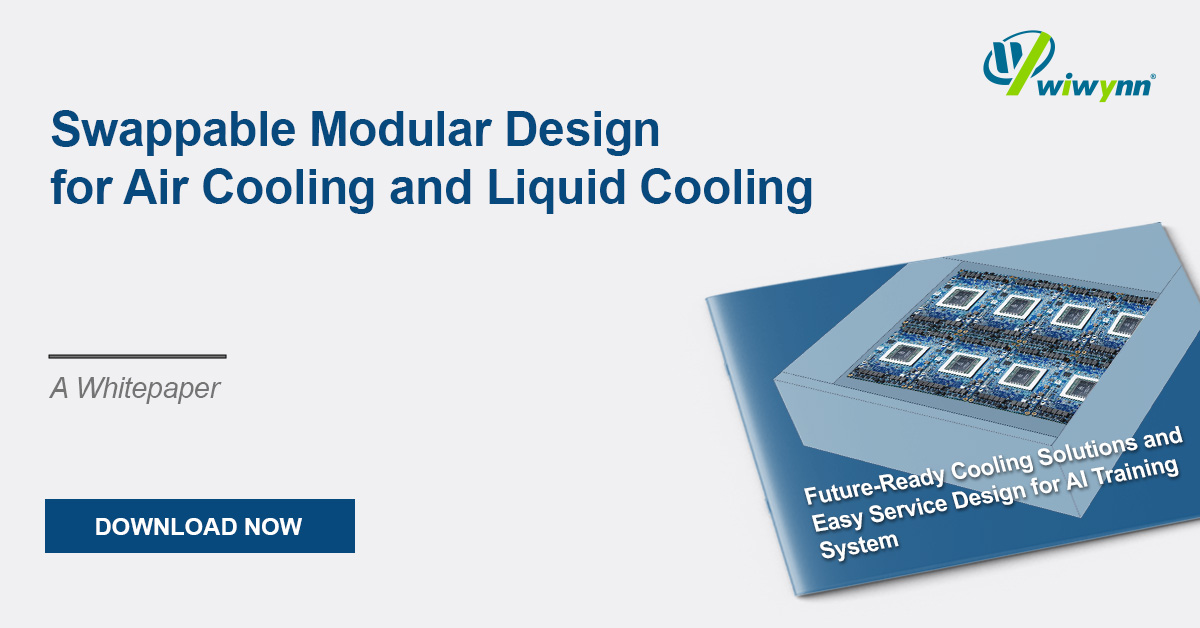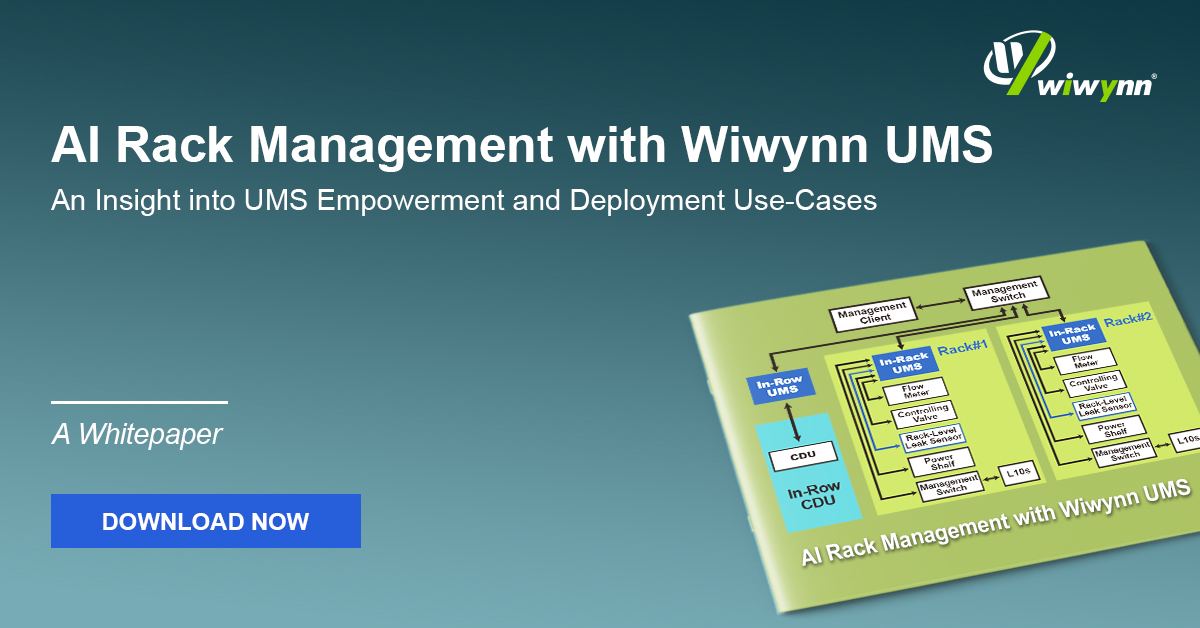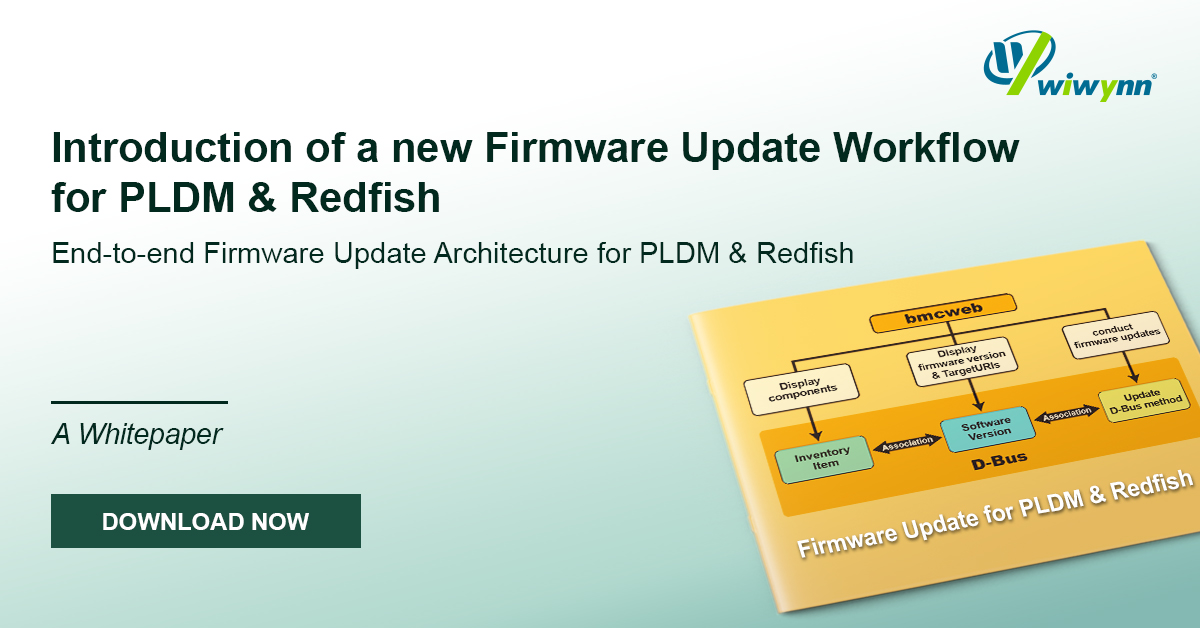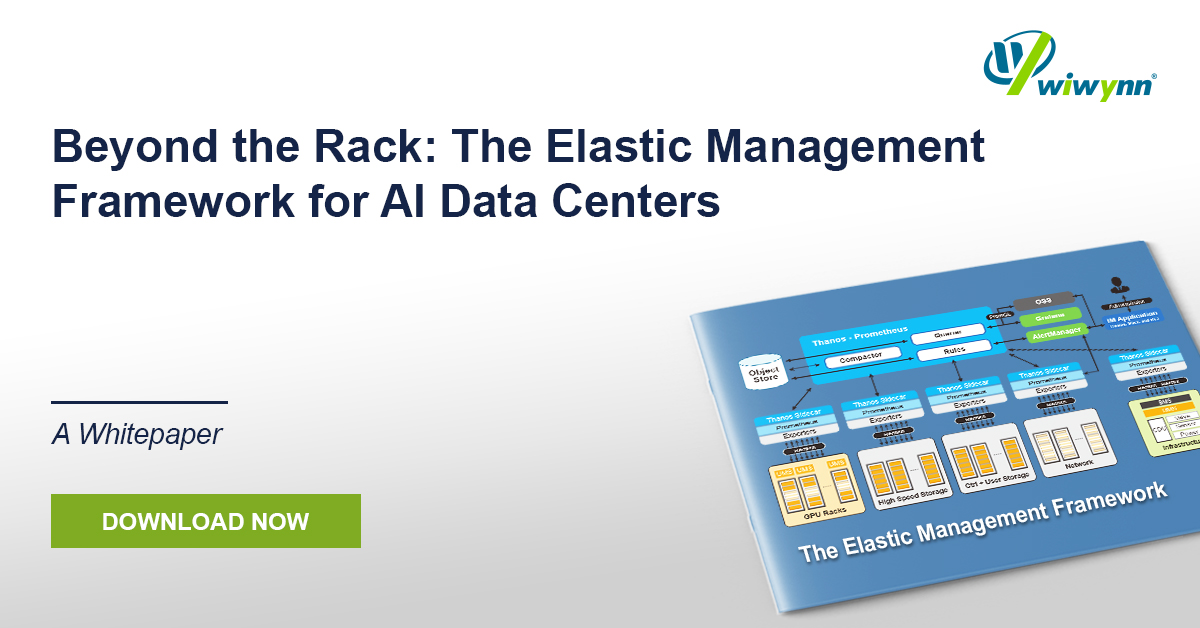1 min read
White Paper: AI Rack Management with Wiwynn UMS
This paper discusses the rapid expansion of AI workloads and the resulting transformation in data center infrastructure requirements. Traditional...
Press
Oct 12, 2022 6:58:22 PM

Air cooling is the traditional way to remove heat generated from processing units by directing cool air through hot surfaces to dissipate heat.
In recent years, the rapid expansion of AI and HPC is in demand of higher performance in both the processing units and in heat dissipation. Aimed to address the heat dissipation limit of air cooling, liquid cooling is introduced as an advanced cooling method to have coldplate array dissipate heat directly from the processing units.
With significant research into AI training system and other data center applications, we came up with multiple swappable cooling solutions for cooling hot processing units (OCP accelerator module) within the same AI training system. This swappable cooling solution design can provide quick and easy upgrade of cooling in most scenarios.
Register to Download the whitepaper!

1 min read
This paper discusses the rapid expansion of AI workloads and the resulting transformation in data center infrastructure requirements. Traditional...

1 min read
Firmware updates are essential for the BMC system. Each device requires a unique update flow and utilizes different transport protocols, such as I2C...

1 min read
AI clusters using next-generation accelerators (e.g., NVIDIA GB200) push rack power density beyond 130 kW, making air cooling insufficient and...